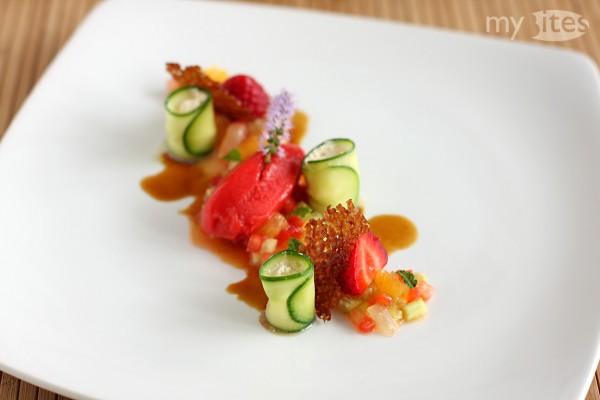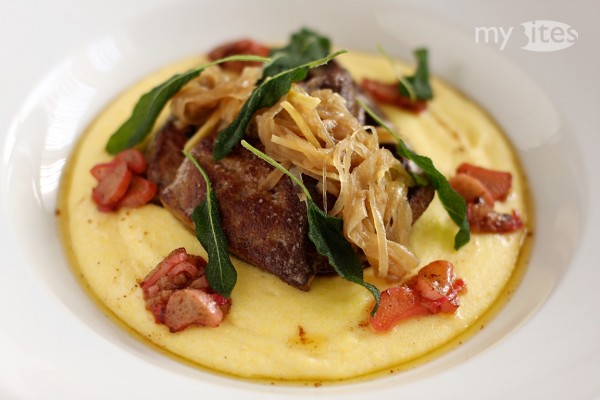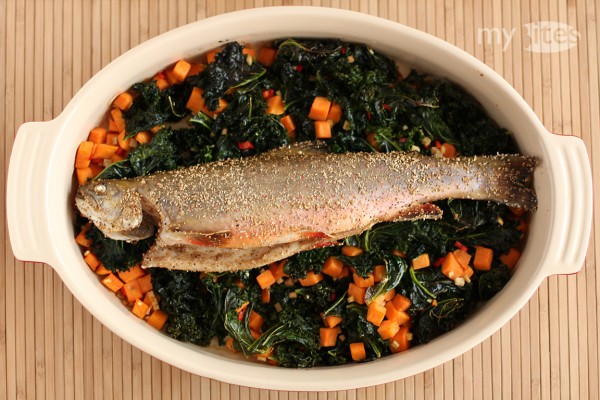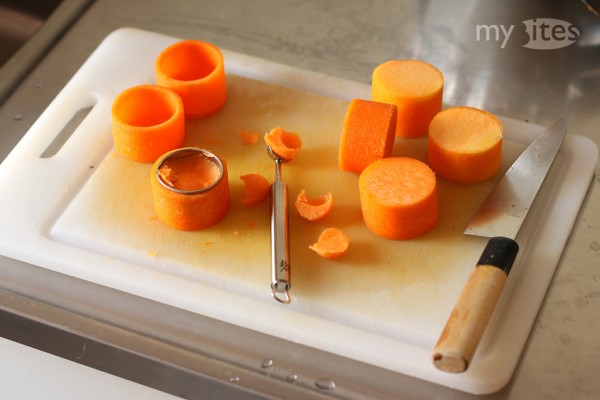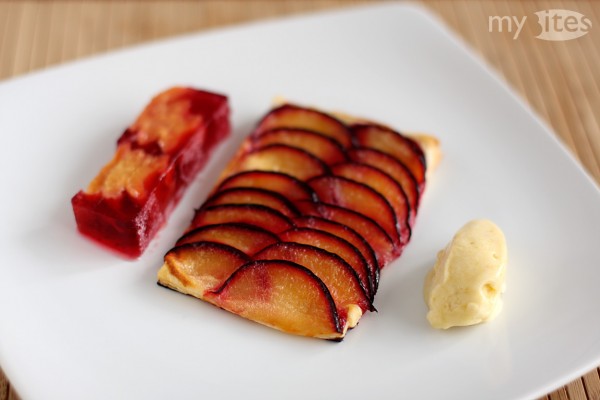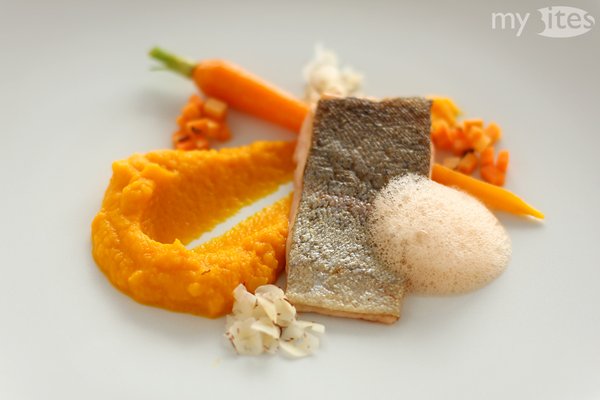Pimm’s & Lemonade is probably the most famous and most popular cocktail of Britain. Its main ingredient is a liqueur called Pimm’s No. 1, which recipe is unchanged – and still kept secret – since 1823, when James Pimm invented and served it as medicine for digestion problems. Pimm’s No. 1 is made with gin, but several other variations exist, like No. 3, which is made with brandy, or No. 6, which is based on vodka. Pimm’s & Lemonade is served in almost every English pub. According to taste it’s usually prepared either with lemonade or with ginger ale. Due to its fresh ingredients – such as strawberries, mint, cucumber, lemon, lime and orange – it is a perfect summer cocktail. While I was thinking about how this combination of ingredients might have developed into the final cocktail, I also thought about transforming Pimm’s & Lemonade (or to be exact in this case: Pimm’s & Ginger Ale) into a plated dessert. After planning each element thoroughly, I ended up with this colorful and extremely refreshing summer dessert.
Tag Archives: ginger
Calf’s Liver with Ginger-Onion Marmalade
By now the local markets are stacked with a large variety of young and fresh vegetables, such as asparagus, radishes, carrots or rhubarb. The latter is categorized often as fruit, although it’s only the stalk of a plant. Probably it’s considered as a fruit, because it’s mainly consumed sweetened by sugar or syrups. Savory interpretations of rhubarb are rare, which is unfortunate, because the tart aroma of rhubarb adds freshness to a plate and replaces vinegars perfectly in spring or summer dishes. In this dish below I used rhubarb as a refreshing sour element.
Char with Asian Style Kale and Sweet Potato
Some of the most surprising and greatest results emerge from sheer coincidence. It was a similar case for this crispy kale. I planned to use kale with sweet potato marinated Chinese style with soy sauce, garlic, roasted sesame oil, chili and ginger, and baked along with a whole char or trout in the oven. The result was surprising – an effect I originally haven’t intended or planned to achieve. All kale leaves that were standing out from the vegetable bed got wonderful crispy, resulting in a kind of kale chips with Chinese flavor.
Pumpkin Dominostein
Pumpkins and squashes are extremely versatile. In Hungarian language the butternut squash is called “baking squash” (sütőtök), because traditionally it is simply cut in slices and baked in the oven until nicely caramelized. The name is somehow misleading, because pumpkins and squashes can be also cooked, steamed, or even be eaten raw or marinated. By adding sugar or syrup they work really well in cakes or sweets too. Based on this sweet application I created a mini cake inspired by Dominosteine, a praline of German origin.
Plum Variations
In autumn plums appear at the markets in various sizes, colors and shapes. For example the round ones are pretty close to nectarines, with the only visual difference that their skins are blue or pale yellow. The oval damsons are the most common here in Franconia, in most cases this is the plum you will find at all markets. And sometimes, if you’re lucky, you might even spot some tiny greengages. Removing their seeds makes the most work among these three plums, but greengages also have a very nice wild, more natural taste. For this dessert I combined these three plum subspecies, all with interesting added flavorings.
The Orange Main Course
In the main course of my meatless menu for the 2011 ZEITmagazin cooking competition I wanted to present the carrot from different perspectives. The base is formed by a clean tasting creamy carrot puree. After cooking the carrots I put them back on the hot stove to dry them out a bit. Afterwards, while blending to a fine puree I adjusted the consistency if the puree by adding some raw carrot juice. Carrots tend to loose a lot of flavor during cooking – by adding carrot juice later I managed to reincorporate the clean carrot flavor into the puree.
